For anyone who works in a role that involves sales, a business card is often your best tool of the trade. Many people believe they don’t work in sales, but, in fact, everybody is selling, all of the time. In fact, it’s often the people with the cushiest jobs who are the biggest sellers in the company. From the CEO right down to the janitor you say hi to when walking in the office, every person plays a valuable role in representing the business. A business card is your sales tool. It advertises you and your entity and acts as a lead generator and influencer.
If you happen to work in construction and wear jeans and a t-shirt to work every day this article probably doesn’t apply to you. But if you happen to wear anything from a polo shirt to a suit to the office, you want your cards to look as good as you.
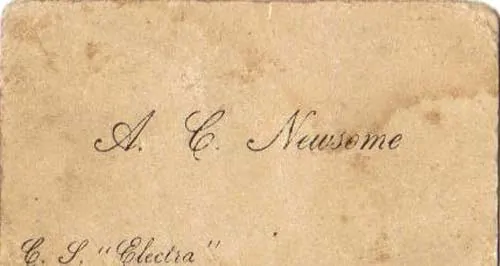
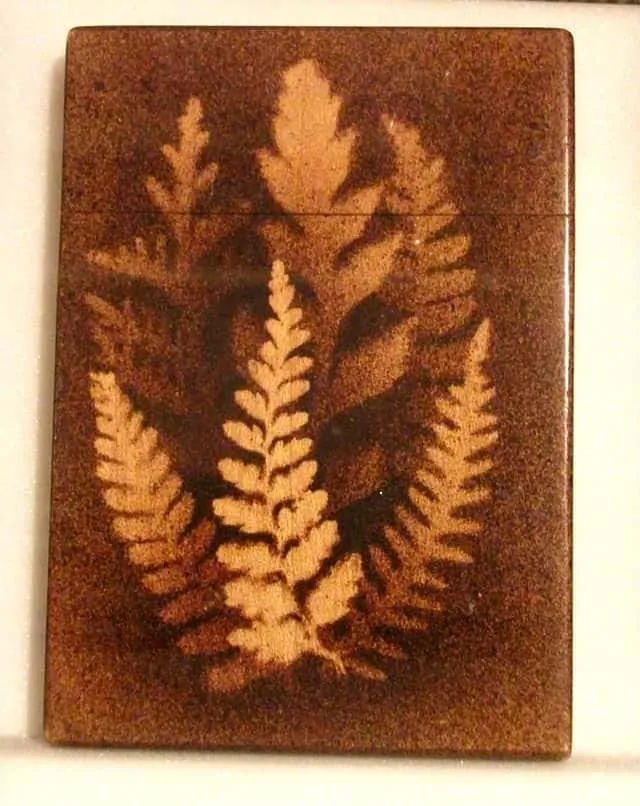
This is why you don’t want to just haphazardly shove your business cards into your already stuffed and overflowing wallet. Not only will they crumple and possibly stain, but imagine how it looks to your prospective customer when you’re scrounging around in your back pocket for your wallet, pull it out and have to sift through receipts and random papers for that card you just had pressed up against your buttocks. Now imagine how it looks when you effortlessly pull a card case from your jacket pocket, it snaps open, and a pristine card slides out into your hand. It becomes the difference between the guy wearing the jeans and the guy wearing the suit. Even in construction, the executives dress up in the office.
If you’re like me and place value on your business card than having a case that matches that quality is equally important. Thus, I put together a little guide about different business card holders and my favorite, so you can find the one that’s right for you.
The History of Business Cards
In addition to being an advertising and sales tool for our business, the actual card serves as a calling card or visiting card as it’s traditionally called.
Visiting cards historically have had huge links to proper etiquette with very sophisticated rules as to how, when and why they were used. Initially, they were used as a form of invitation, whereby one person would leave their card at anothers home as a way of requesting an invitation. They would then wait for a card to arrive from that person which would serve as an invitation to visit or confirmation that their attendance was welcome. If no such card arrived, or it happened to be concealed in an envelope, it would serve as confirmation that the person was unwelcome and that a personal visit would be discourteous. These cards were very common amongst the aristocrats in Europe as well as America and even become quite prominent in royal homes. The reason it was so popular amongst the elite, was simply because many or most of them had servants that answered the door. If it had been the homeowner, there would be little need for such cards, but the cards served as a way for the servant to properly welcome or discharge visitors without having to disturb their employer. As well as servants receiving the cards, many aristocrats required their servants to deliver them as well, acting as a courier or messenger. Should the card be delivered in person, rather than by the servant, it was customary for the corner of the card to be bent upwards which would indicate upon receipt that it had been left in the most personal of manners.
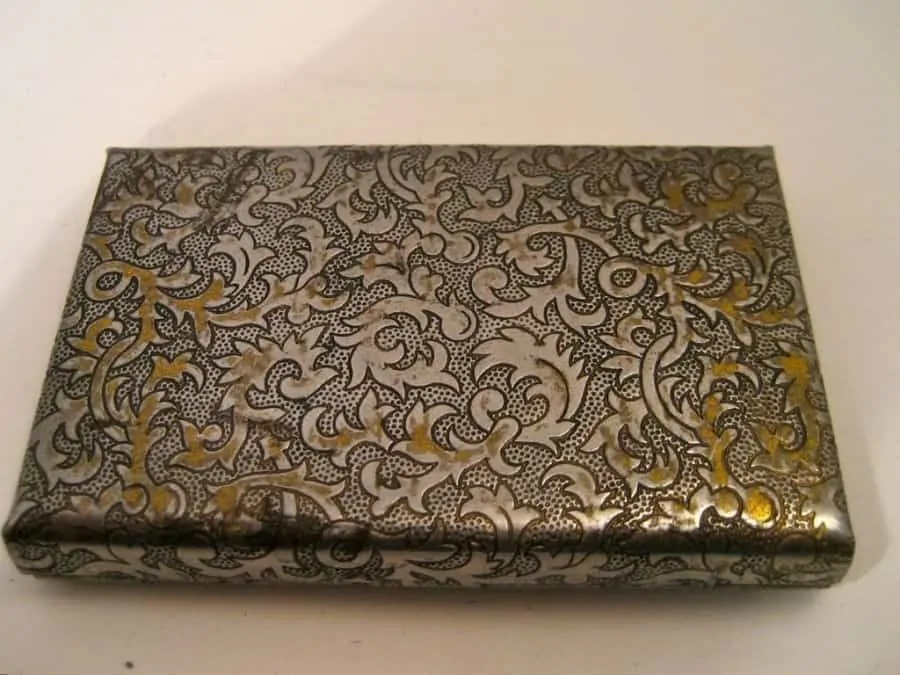
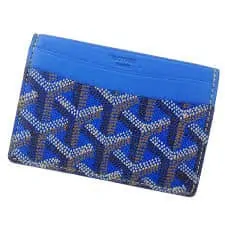
Since these cards were so popular amongst such a discerning group of individuals, many of them felt the need to accentuate really their cards in an effort to stand out or often to out shadow other members of the community. Therefore, it became common practice for the cards to include some of the features we opt for today in a business card such as embossed letters, a logo or coat of arms and engravings. Also, these historic visiting cards would also include the bearers name, and sometimes their club name if they belonged to a gentleman’s club such as the Freemasons or another fraternity. What wasn’t included was contact information such as addresses, something that is today, common on any business card.
Today, these visiting cards are called business cards, but there are still many individuals who use them for personal use, rather than to advertise a business. As an example, my grandfather, who has been retired for many years, still has visiting cards which he hands out should he wish someone to have his contact information. My father who is retired as well has cards that detail his contact information.
As a journalist, I don’t often find myself trying to sell “writing services” to other magazines, especially since most of the magazines I write for aren’t local. However, I still have business cards that serve me more as a visiting card than anything else. While they do include my phone number and email, they don’t advertise my office address as I don’t accept walk-ins, but rather appointments only.
Obviously, those who invest in business cards want to keep them protected. Additionally, it is hard to imagine an aristocrat handing out a visiting card that he plucked from an envelope. This is why most cards have historically been stored and carried in equally refined and elegant cases, embossed and engraved using precious metals, ornaments, and luxurious fibers.
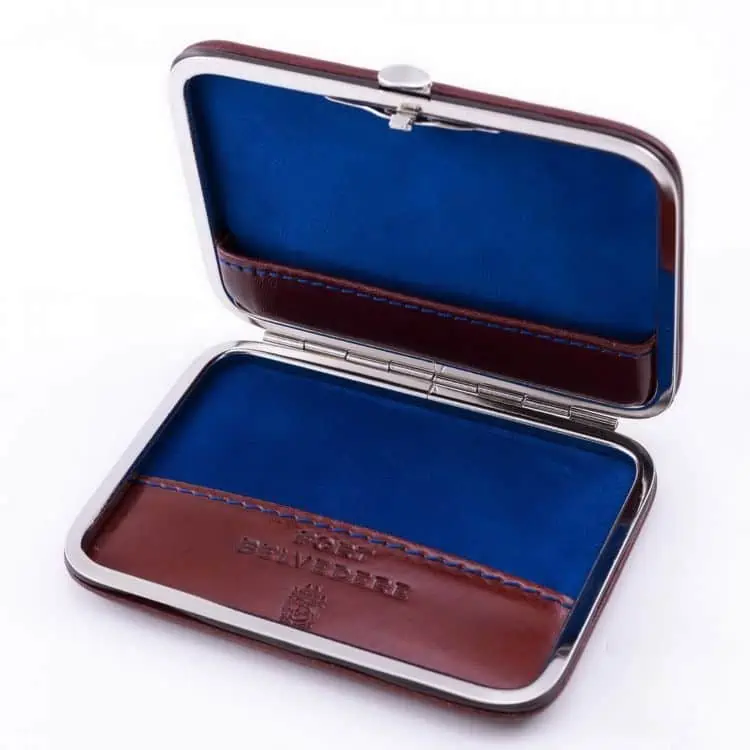
RECOMMENDED
Business Card Case in Whisky Brown Leather and Blue Lining by Fort Belvedere
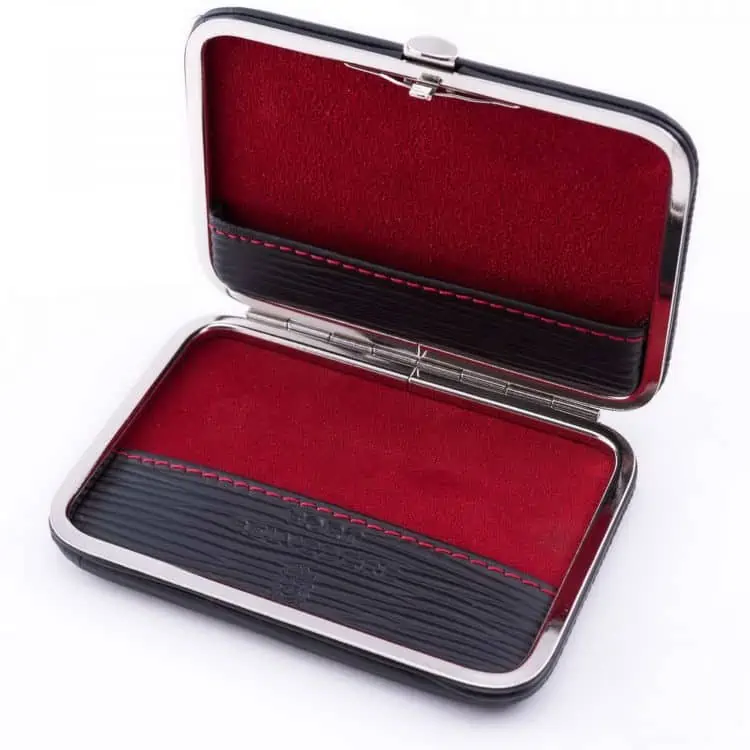
RECOMMENDED
Business Card Case for Men in Black and Red Leather by Fort Belvedere
Types of Cases & Holders
Today there are really two types of cases commonly available and advertised as card cases or holders.
These are metal card holders and leather card cases. Of course, there are a variety of other styles available such as knit fabrics geared towards more casual card carriers.
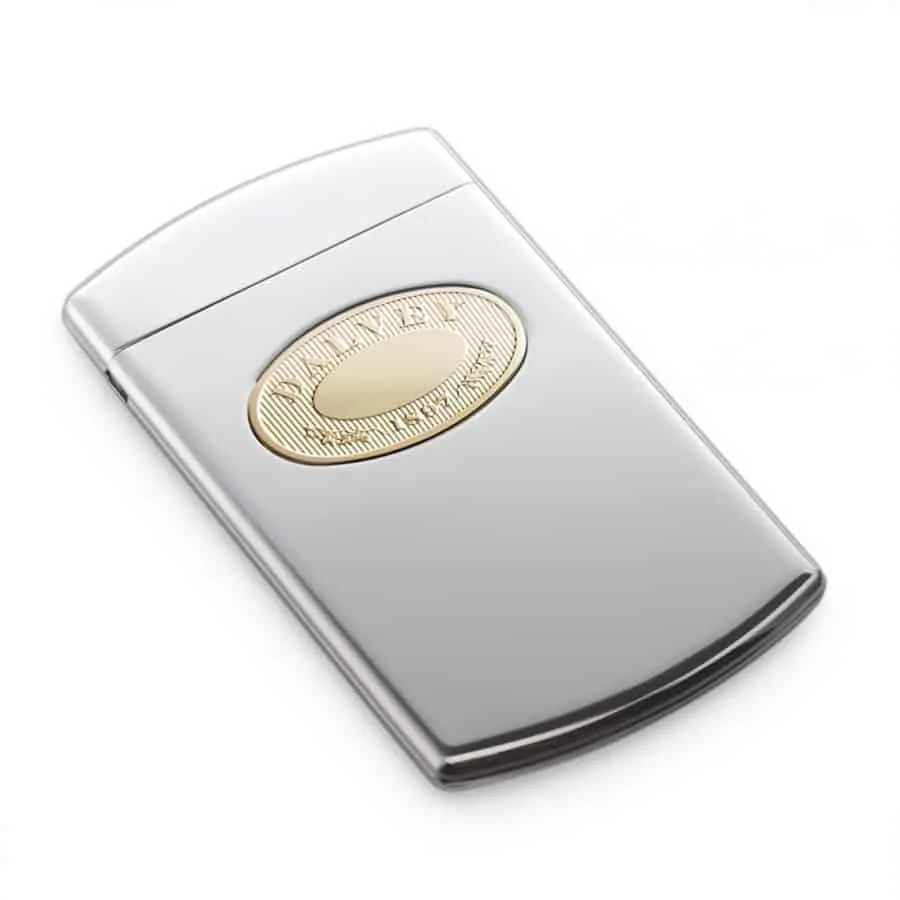
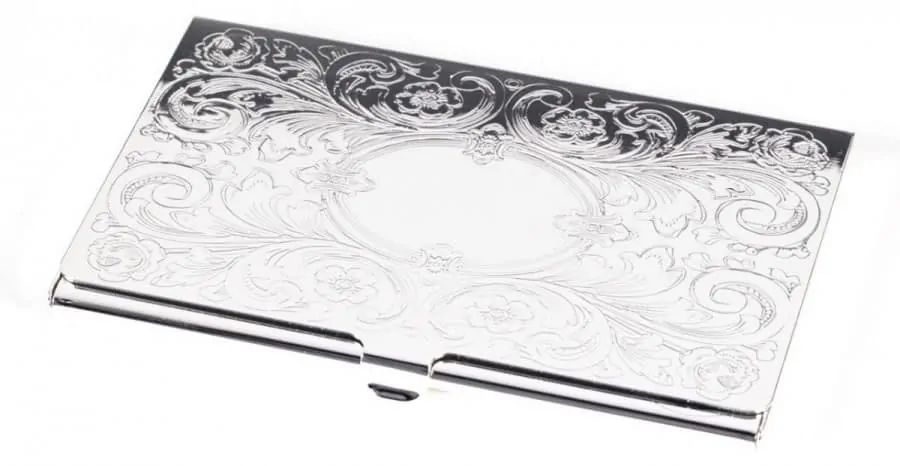
Metal Cases
Metal cases are usually the most common found in North America. They can range from being very inexpensive and basic metal cases to more elegant and refined cases made of gold, rhodium or a variety of other precious metals. Even the least expensive cases sold at shopping mall kiosks usually have the ability of being engraved with, at the very least, a basic monogram or the owners full name. Many companies will hand out cases to their employees that are branded with either the logo or name of the organization.
Some metal cases will also feature other, more premium accents. These can include anything from two-toned cases to ones encrusted with diamonds. Many middle eastern aristocrats will have various rubies and other ornaments on their cases, whereas you can find many women in coastal communities accenting their holders with pearls.
When purchasing a metal case, often like many other products, you get what you pay for. The most important factor to take into consideration is the case construction. After all, you want to ensure the case will survive basic day to day beatings incurred when kept in your pocket or briefcase. When shopping for a new case, take the time to examine the hinges, hardware and various moveable parts. Play with them gently and take a few minutes to make sure they feel secure. If you do choose to engrave your case, be advised it may void any warranty otherwise offered, which would allow you to return the case for a refund should it break.
The second factor worthy of your consideration is the quality of the metal used. At the very least ensure it’s a rust resistant metal. There’s no point in showcasing your business card in a case that’s covered with rust or changing color. Additionally, you’ll want to ensure it’s engraveable should that be of interest to you. While many engravers will argue that all metal can be engraved, in my experience that is not always the case. Try and spend more than a few dollars to guarantee the quality of your case.
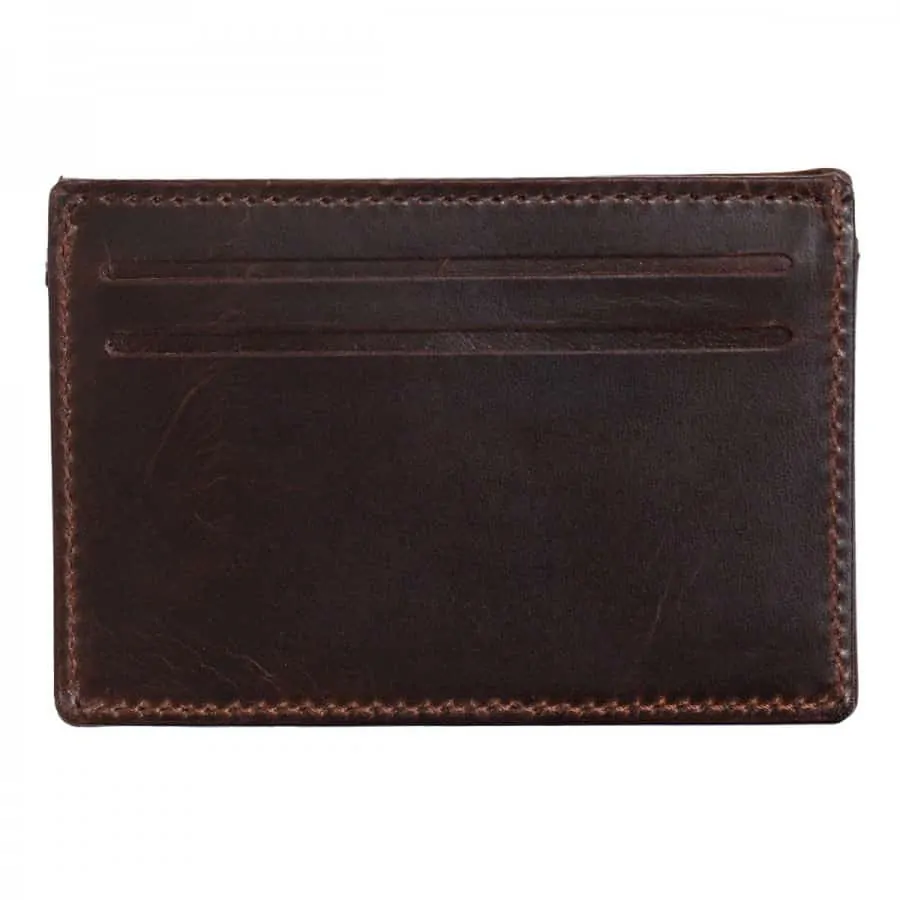
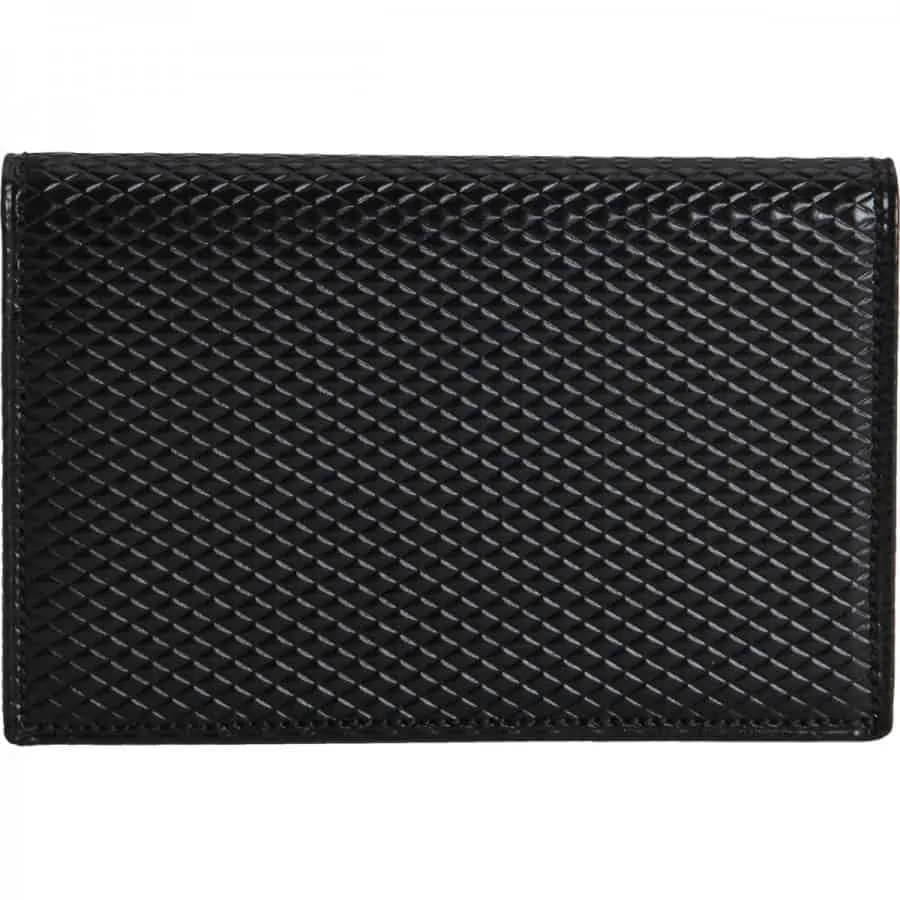
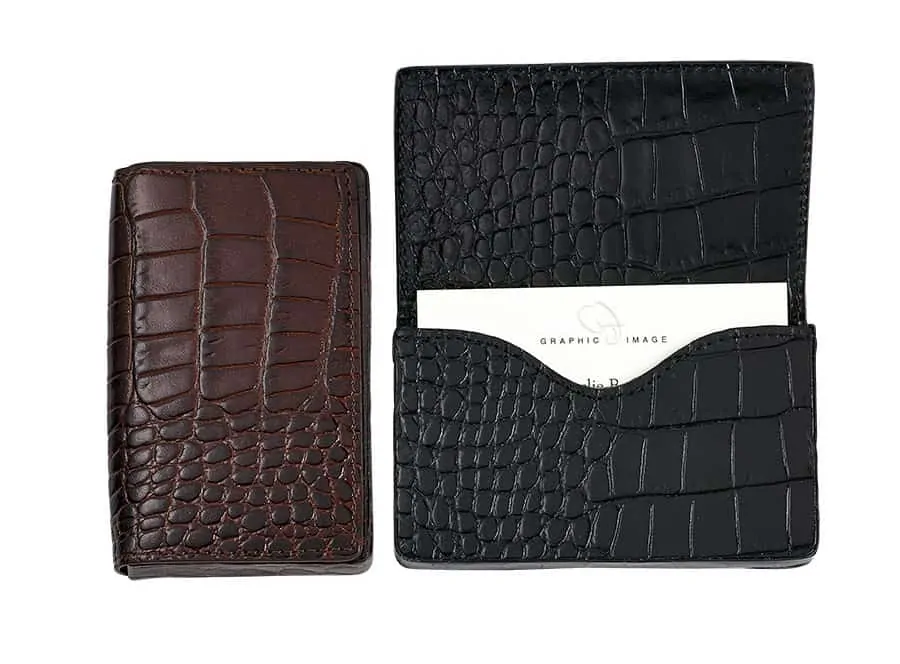
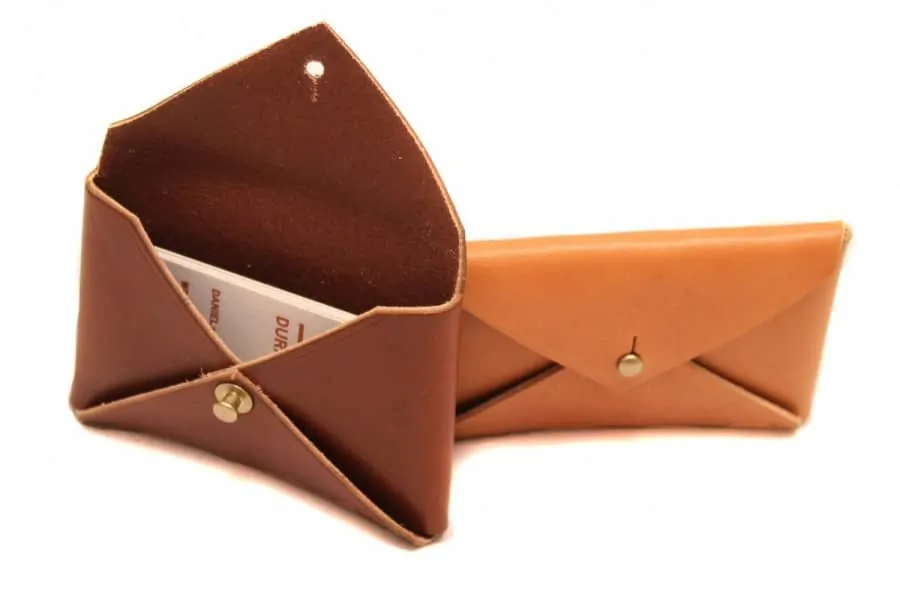
Leather Holders
Leather cases have long been my favorite type of case. In my opinion, they generally just present a far more elegant appearance save real gold, rhodium or silver cases.
While most leather cases will use a metal skeleton, some do not. There are card cases so thin, they slide effortlessly into even the tightest pockets, but there are also the traditional sized holders which require the stability of the metal interior. Typically, the traditional ones are slightly more protective for your cards, as the leather-only holders will tend to bend with minimal pressure the same as your wallet can, which can damage your cards resting inside.
When it comes to choosing a leather case, there are many styles and types available. From basic leatherette (faux leather) cases, to exotics such as alligator, ostrich or lizard, you can find leather cases in many different colors, patterns and qualities.
If you are looking for a basic case, I do recommend trying to find one that is still real leather and not imitation. Try to ensure it has some thickness to it and that it isn’t going to snag easily which could result in it tearing.
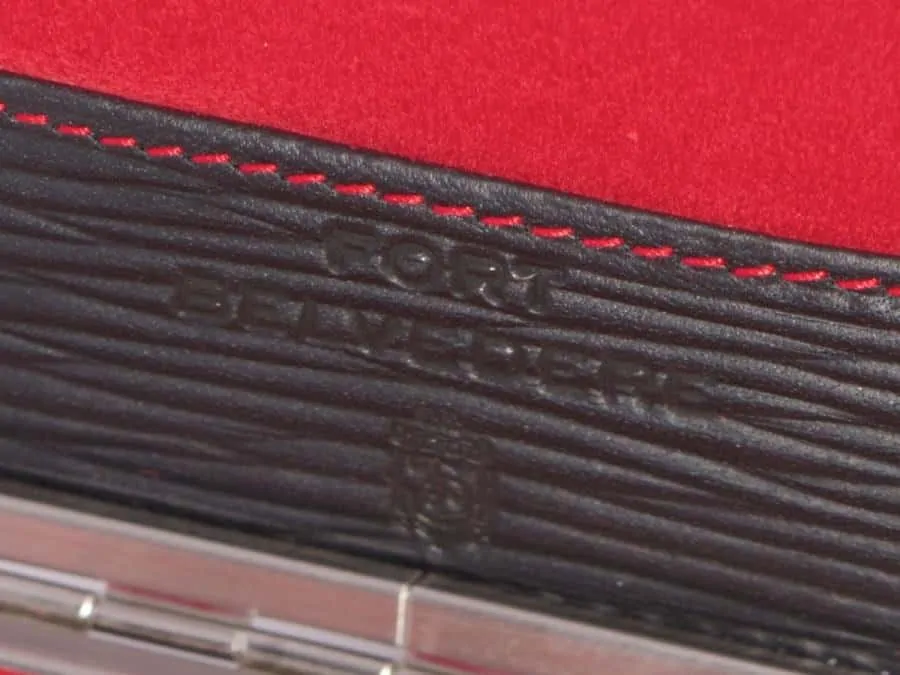
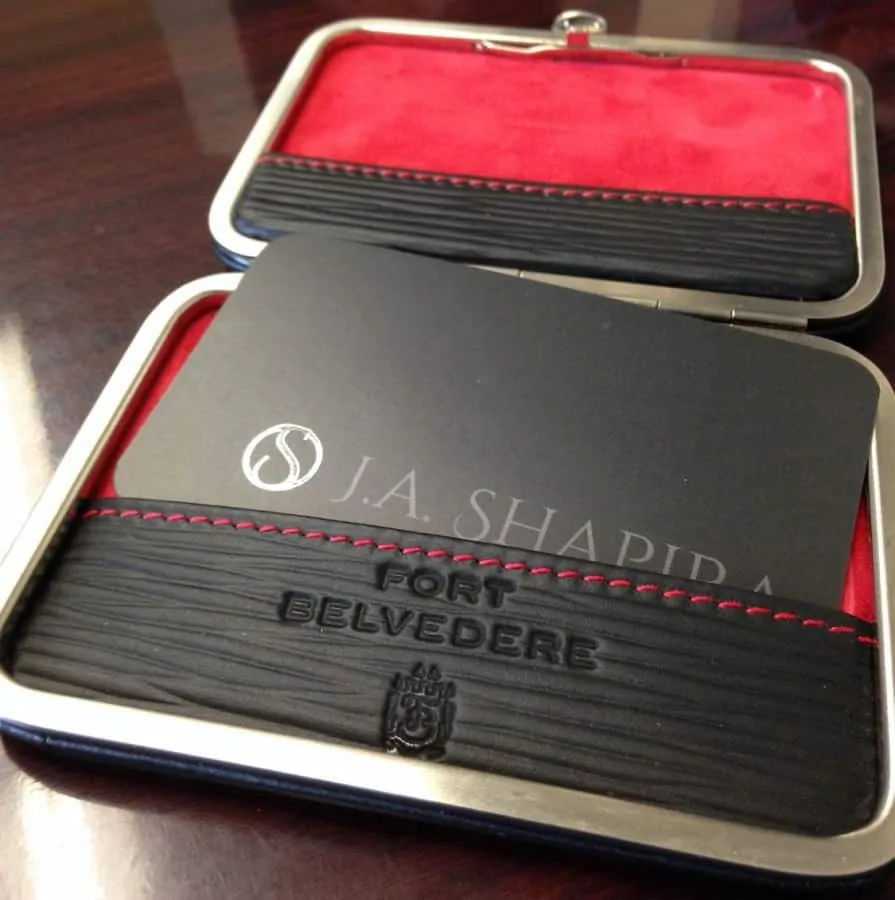
Clasps and Locking Mechanism
When it comes to how the case closes, there are some that remain open for dust and debris to touch your cards, with others that securely close either by magnet or a latch of some sort.
This is another factor to keep in mind when selecting a case. If you do choose a traditional case that closes, make sure the seal is of fairly good quality so you don’t have to fight with it to open or close. Since many companies have moved away from traditionally sized cards to custom cuts, you’ll also want to make sure they’ll fit in your case and that the case will still be able to close and remain closed with the card inside.
Psychology & Business Card Holders
If you think about a business card and its case as an extension of your style, your clothes and your brand. Just think about the famous scene in American Psycho – the card case, the sound they make and the mechanical aspect of it are almost as important as the card itself.
If it stands out from the crowd, people want to talk about it, and they take you more seriously. For example, Sven Raphael Schneider has very thick business cards, which are engraved with a custom ink on paper that is made of 100% cotton, with a silver edge painting. If he pulls his card out of his business card case, and hands people his card, they usually remark on the quality of the card, and inspect it carefully. He can then talk about what goes into the card, and that he and his company stand for quality from A to Z including his business cards and business card cases. This is a perfect match. If you sell wood, maybe you should invest in a wooden business card and business card case, or try to think about a way your business card or case can tie in to your or your companies story. Chances are you will be remembered as someone who is consistent in what he does, and that will always help you sell yourself or your product. At the end of the day, it makes perfect sense – if someone puts some thought into their appearance, business cards and cases, they will most likely have the same standards for their product, work or service.
My Favorite Case
Of all the business card holders I own, the one from Fort Belvedere is absolutely my favorite. I had high expectations, as I knew that Sven Raphael Schneider wouldn’t put his name on it unless it was of the absolute highest calibre. However, I was blown away when I unwrapped the case. The craftsmanship is top notch, the leather is supple to the touch and padded. On top of that, the red interior is made of real goat velour leather rather than imitations leather as it is mostly the case with others. The red color and soft texture of the suede lining adds a touch of elegance that is certain to turn heads and start conversations. As a collector of fine accessories and the owner of a number of resplendent card cases, I can say without a doubt, that this case by Fort Belvedere is by and far, the most beautiful business card case I have ever laid eyes on, and I am both honored and privileged to be able to call it my own, and I think the photos don’t do it justice.
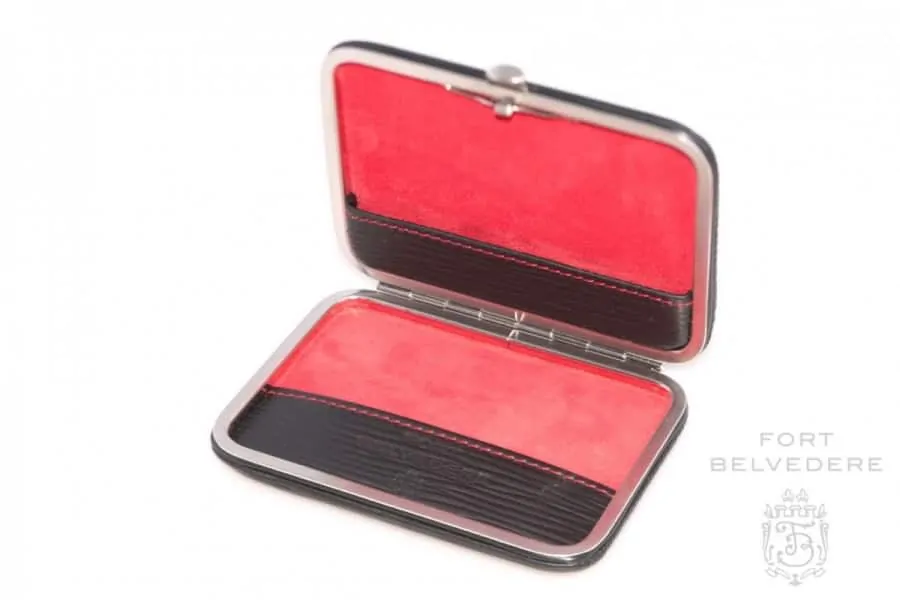
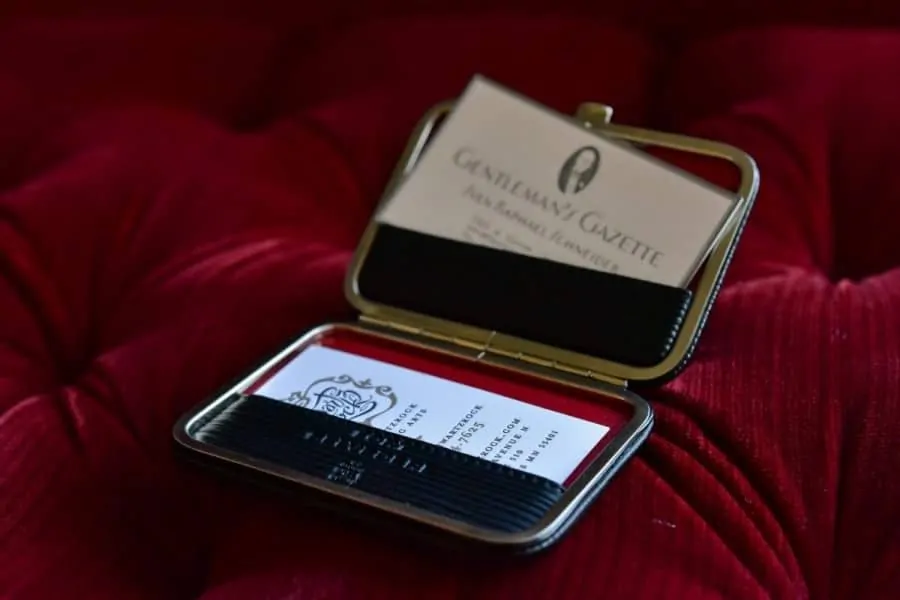
Case Collections
Many people will opts to use more than one card case. Using myself as an example, since I prefer a leather case to metal, I own various cases in both brown and black leather so I can match it to my attire. This way I don’t have to worry about pulling a brown leather card case out of a black suit jacket. While it wouldn’t be the end of the world if I did, by coordinating the case as an accessory, it shows other people that I take pride in my appearance, and surprisingly, I often get comments on how well put together it makes me appear.
If you’re like me and want a small collection of card cases, I highly recommend starting with the following types:
1. A black leather case with minimal detailing and a metal shell.
2. The same or a similar leather case in brown.
3. A metal case engraved with your monogram or coat of arms.
4. A casual case which can be worn when you’re not working. This could be constructed out a variety of materials, but generally I recommend something thin.
5. A case, metal or leather, that exemplifies your own personal style and flair.
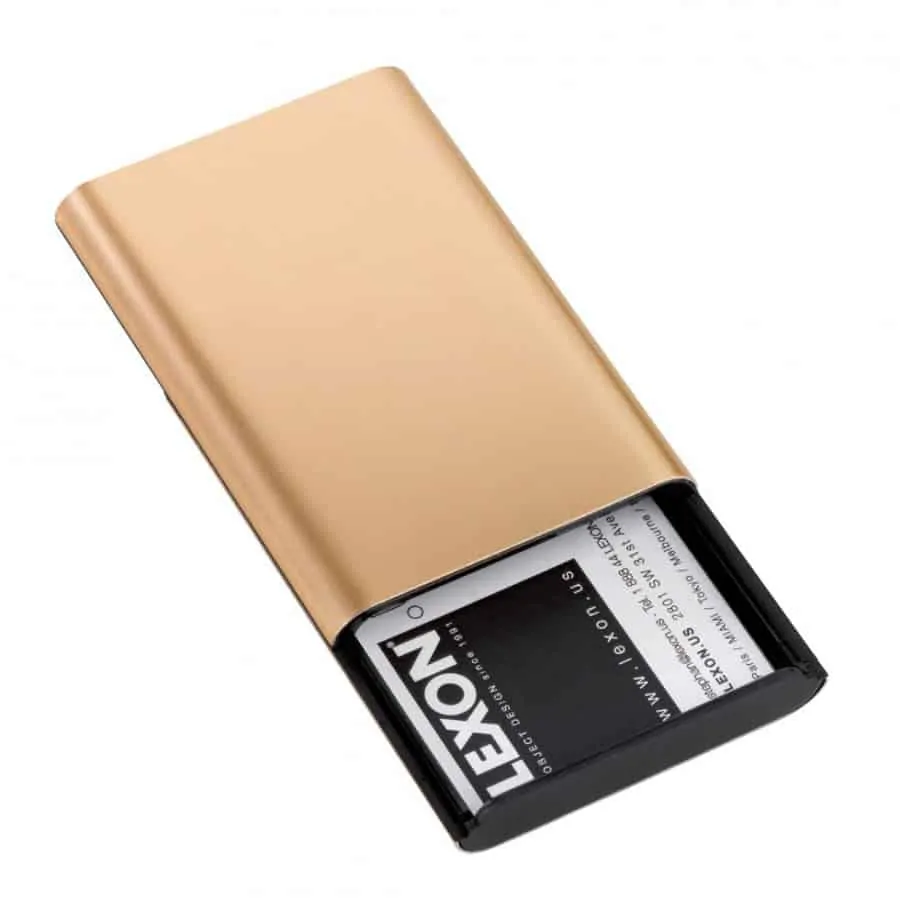
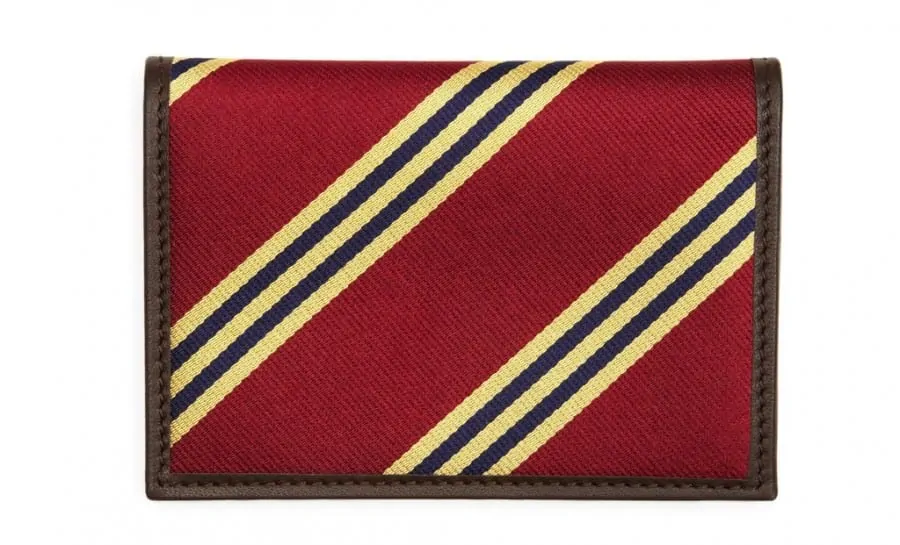
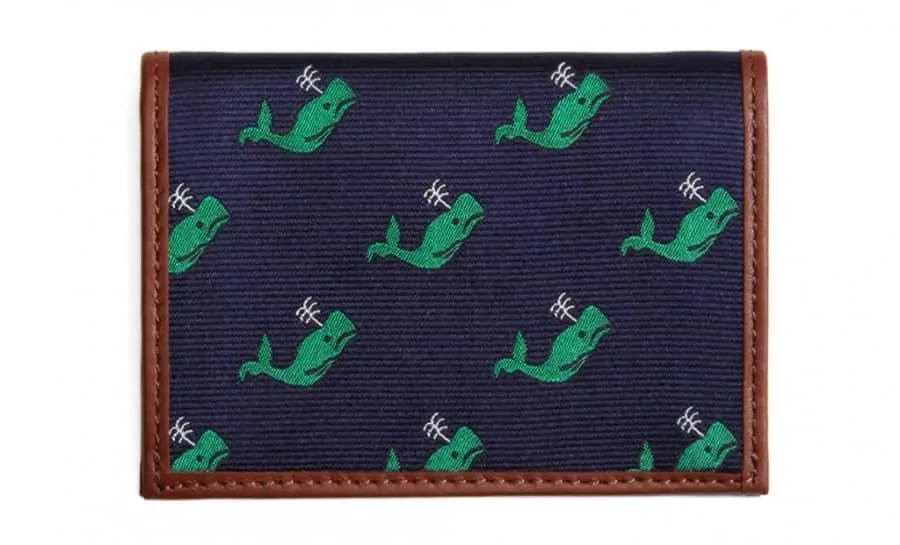
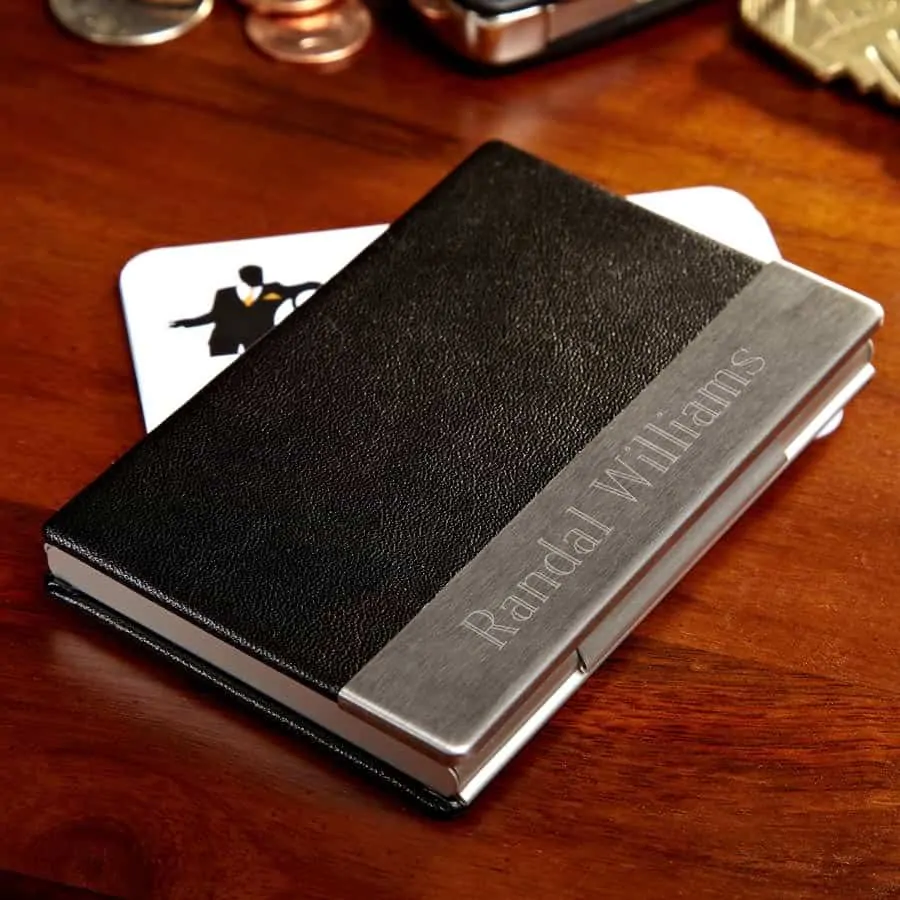
Conclusion
Card cases come in such a wide array of styles and materials. You can buy one on eBay for as low as a single dollar, or from a designer for as high as thousands. Like almost any accessory there is a vast range of quality that often increases with your budget. In the end though, there is never an excuse for not having a card case. If you own a business card or a visiting card, you need a case for it, and one that isn’t your wallet or lint filled pocket itself.
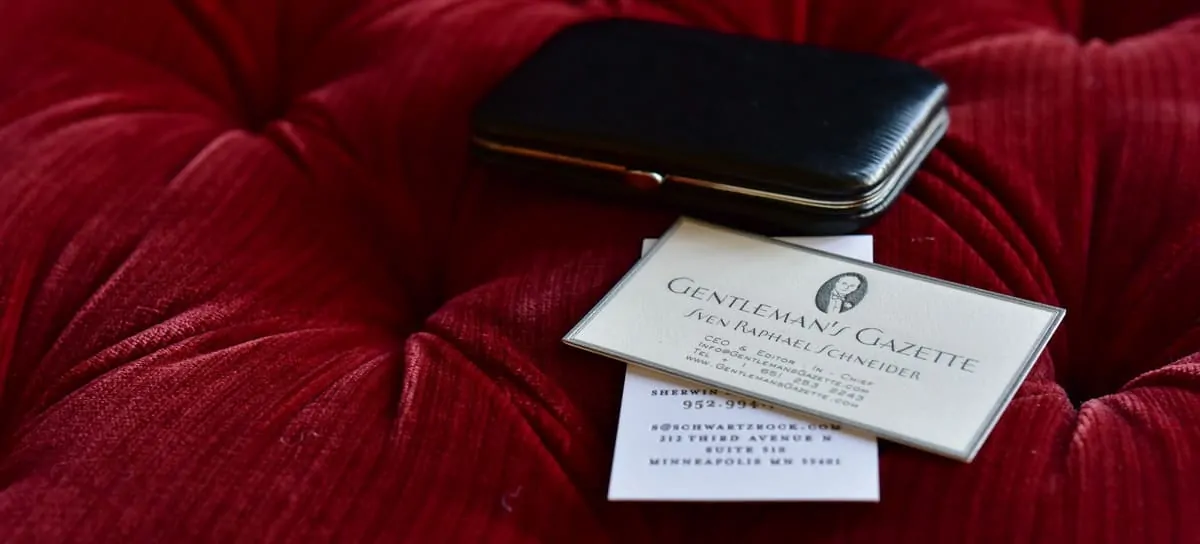
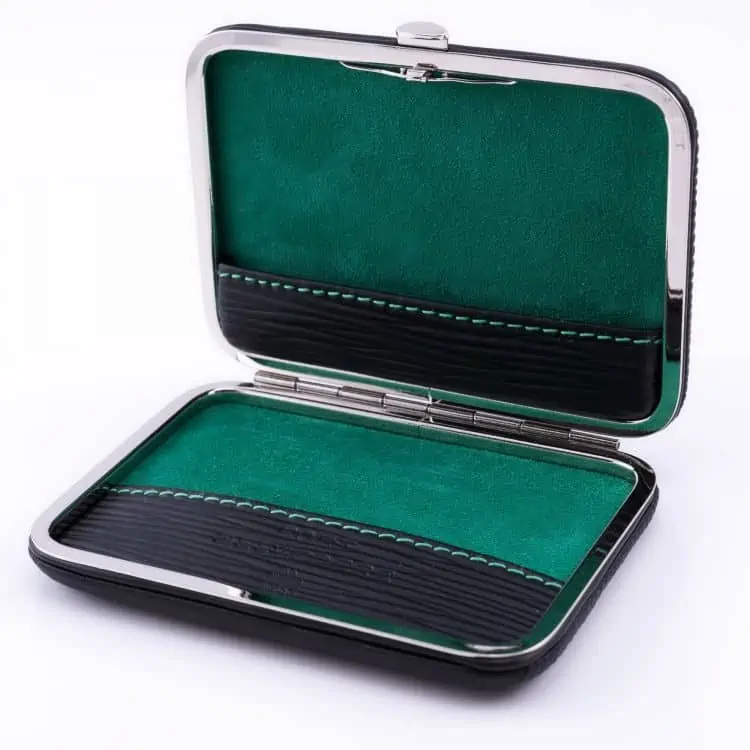
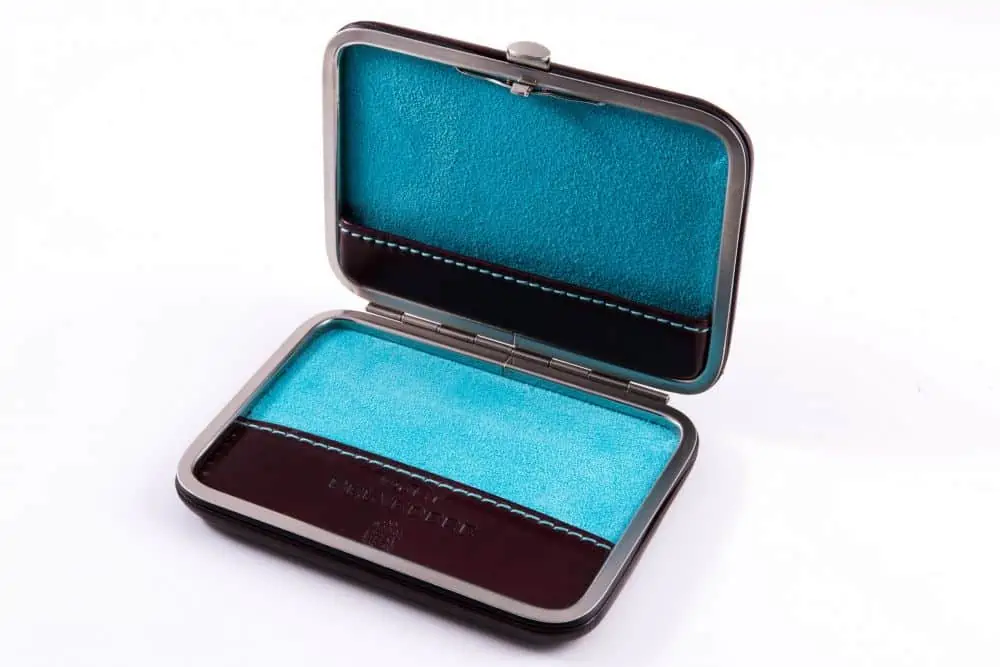
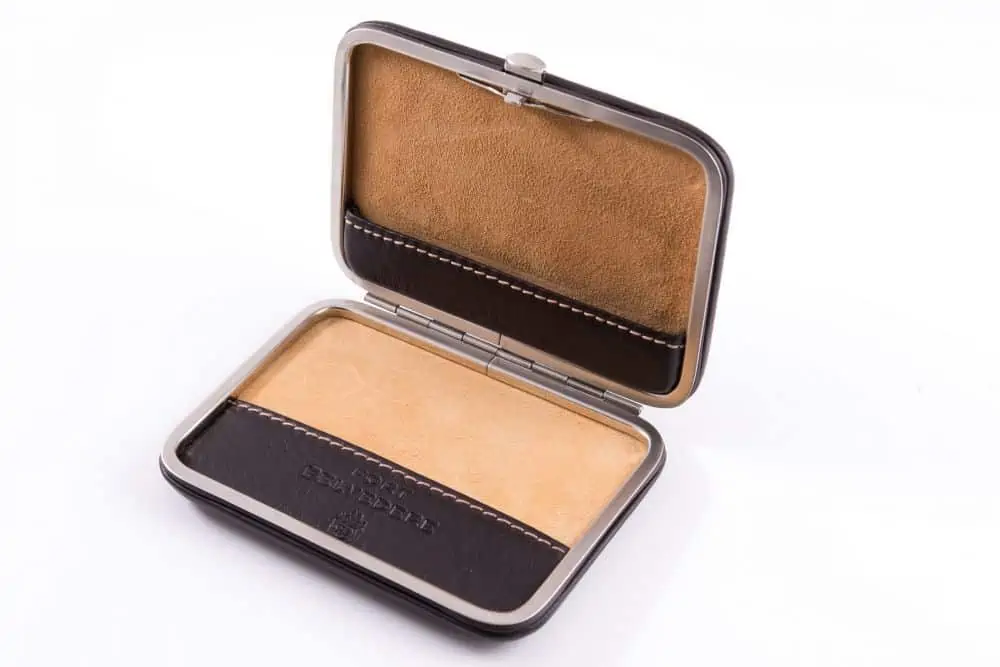
Having a nice aesthetically looking case whether metal gold, or leather, with equally nice pleasing to the eye attractive gloss cards and good but all can be lost if not handled properly. Business cards should be ‘presented’ not given or simply handed over to show professionalism and a mark of respect to the person who is receiving. The card should be held which each hand’s finger & thumb on the upper corners and then presented over to the other person. It is a custom still done is South East Asia and Asia-Pacific and is noticed when done this way – even to the point of complimentary comment and so often it is done in a absent minded casual way in Europe as though done just to make contact or try to attract business rather than having a real genuine wish to develop a business relationship and enhance potential client/customer loyalty.
My first impression was that this is a very expensive item. Then I looked around and saw that except for cheesy ones from Amazon, this is actually a pretty fair price for such an item, especially considering the materials. I’d like to see other options offered too, such as a metal case of the two-toned engraved case shown in the article. Very nicely done!
Quality has its price, always but you can enjoy it every day even years down the road, when the price has long been forgotten.
Using business cards in most business circumstances has become an anachronism and is deemed as old fashioned and unnecessary in the age of social media.
Frankly no matter the quality of the card it is looked at once and discarded. In my experience as a senior executive working with Fortune 500 companies your reputation will be established already and a business card will be deemed irrelevant at best or pretentious at worse.
In the Far East a high quality embossed business card is still considered important.
:)
Maybe a business card in the US is useless, but using punctuation isn’t.
Eh? Using Punctuation? This is a website for people to post their opinions. What has punctuation got to do with it?
I don’t understand…
Are you sure about that? The CEOs I talked to don’t think so, and you should underestimate the subconscious effect of it.
Yep pretty certain. Most C levels at Global firms meet so many external advisors, consultants, vendors and external stakeholders. The cards are glanced at and then stashed away. Irrespective of whether you’re from PWC or Freshfields or Goldman Sachs most firms gave up long ago spending money on decent business cards. I see the value for them if one wants to use them on a personal basis or for a start up firm. Nowadays people will have checked out someone’s profile on LinkedIn to get a view of who they are meeting.
Each to his own ;). My printer is full of current sample business cards from law firms because they like the fact that it is much harder to fake or copy.
Should the card be delivered in person, rather than by the servant, it was customary for the corner of the card to be bent upwards which would indicate upon receipt that it had been left in the most personal of manners.
Cited from: The Business Card Case Guide — Gentleman’s Gazette http://www.gentlemansgazette.com/business-card-case-guide/#ixzz3A7zkofgC
This would be because you would have had printed on the corners of the backside of your card: p.r.v. (pour rendre visite), p.f. (pour féliciter), p.c. (pour condoler) and p.p.c. (pour prendre congé). Simple, not?
Where to buy the leather cases? Which company they come from? Thanks and kind regards!
From Fort Belvedere, here:
http://www.gentlemansgazette.com/shop/leather-goods/small-leather-goods/leather-business-card-case-luxury-fort-belvedere
Because I am an elderly dandy and not some awful young corporate thruster as shown in the clip, I use antique cigarette cases, one which just by happenchance had my initials already engraved upon it.It is art deco silver from the 1930’s.The other was originally base metal which I had gilded; it shows a high relief repouse depiction of Rembrandt’s “The Night Watch.” Mercifully, I don’t have to impress the boss.
Very interesting indeed!
I collect business cards. Is there a way for me to get one of the Gentleman’s Gazette’s cards?
Ah, I usually only hand them out in person. How many cards do you have in your collection so far?
Great information.
If you use a metal case, be sure the edges aren’t sharp as they’ll wear a hole in the jacket pocket and lining.
I found out the hard way. :(
I used, still use, a leather business card holder embossed with my name. I was a senior executive for a fortune 500 company. I used cards from Crane, engraved on 110 lb. stock, which were always well received by my customers. I have since retired and now use a modified calling card, also engraved on Crane paper. My name is the center with my phone number on the bottom right corner. The card measurements for American males can be either 3 3/8×1 1/2 or 31/2 x 2; which is the size I prefer.
Thanks for sharing Larry!
Thank you for publishing this article!